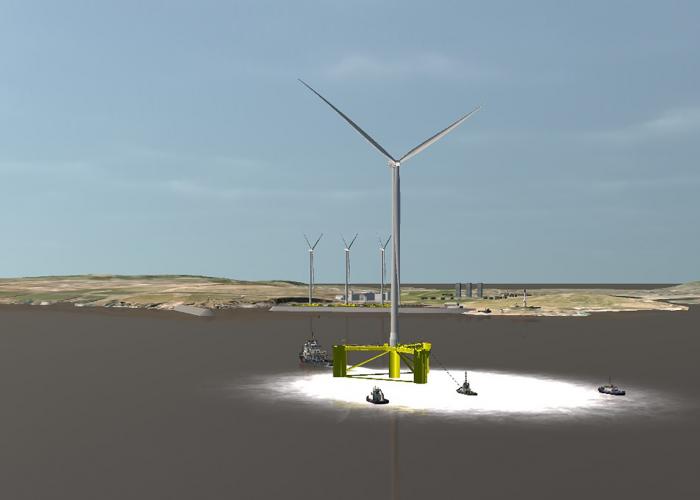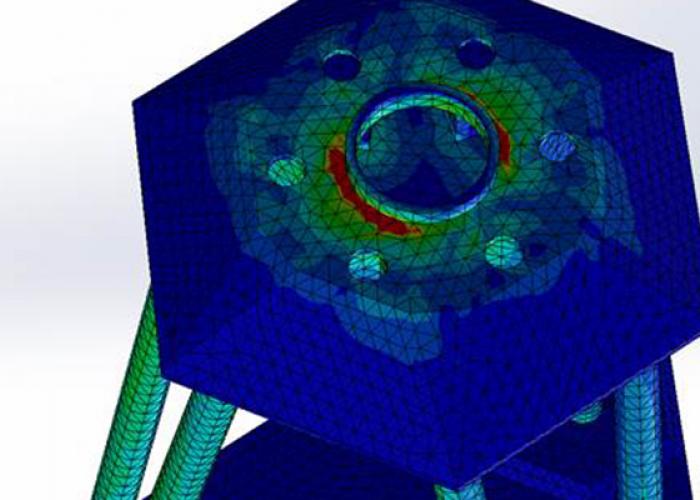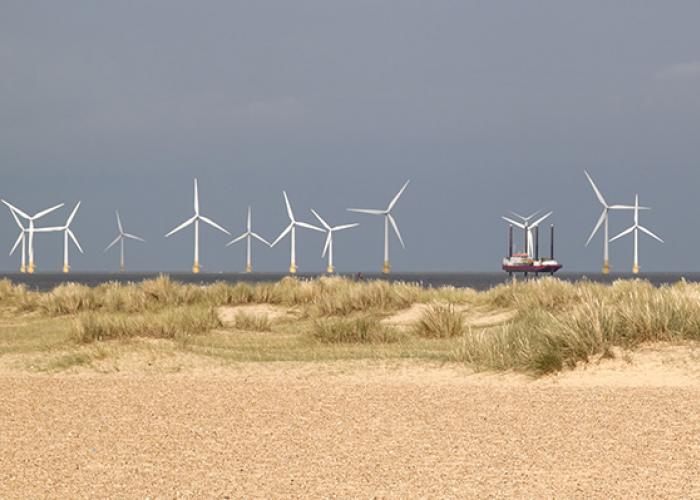ECOWind begins investigating marine impact of offshore wind growth
The first tests forming part of novel collaborative research to support offshore wind to expand in a sustainable way have been completed by Bangor University and HR Wallingford. The results will be combined with research by other ECOWind-ACCELERATE project partners to evaluate how future wind turbine bases can have a positive impact on marine ecosystems.
The tests in HR Wallingford’s physical modelling hall are the first step in understanding the relationship between flow around wind turbines, and the impact on seabed, seabed animals, and the seabirds which feed on them. The ultimate aim of the project is to make the most of the opportunity from wind farm growth to ensure that seabed changes lead to biodiversity gain.
Installing the next generation of offshore wind farms is likely to mobilise extra sediment, potentially affecting a large area around a wind farm. The climate crisis will also change the speed of flows in our seas, as storm tracks change and sea levels rise. Faster flows could make new fields of ripples and dunes, or change the seabed from sand to gravel or vice versa. These changes create different habitats for smaller marine creatures, which can prove attractive to them or may make them move away. Some animals on the bed, such as sand eels, are a food source for seabirds, so the reaction to a changing seabed habitat can be felt by these top predators.
The flume laboratory tests, using 1:20 scale models of the wind turbine monopiles in a huge water tank, focused on investigating how current flows change when a monopile is installed, leading to sediment moving and the seabed being re-sculpted. The HR Wallingford team is now using the data collected to validate and develop numerical models, enabling scientists to assess the changes to the seabed from a whole farm of wind turbines.
HR Wallingford scientist Connor McCarron explained: “Our models for offshore wind farm monopiles include those of a size currently installed around the UK, but also the larger ones expected in the next round of wind farms. We are drawing on our years of expertise of helping the offshore wind industry design their turbines and scour protection.”
The ECOWind-ACCELERATE project will also draw on existing and new field data. The organisations developing the seabed in the Eastern Irish sea are sharing data and their expertise, and Bangor University will use its research vessels to make new observations of how the seabed has changed in the last 10-20 years inside and outside wind farms.
Katrien Van Landeghem, Project Lead for ECOWind-ACCELERATE and a marine geologist based at the School of Ocean Sciences at Bangor University, explained: “From our research vessels, we will use an autonomous underwater vehicle, designed to go close to infrastructure to take pictures and gather other environmental information, to know exactly what that seabed looks like and how it supports the local ecosystem. Biologists will be observing fish and the seabed habitats they use, whilst simultaneously tracking seabirds to see what they eat and where, and how much energy that costs them. We will use the findings to make future predictions of the state of the seabed and the wider ecosystem, and look for opportunities for seabird conservation and seabed biodiversity gain.”
Other partners in the project – which include the University of Liverpool, the Joint Nature Conservation Committee, the Royal Society for the Protection of Birds and the Royal Netherlands Institute for Sea Research – will bring expertise on marine habitats, seabed animals and seabirds to help understand and model future relationships between them inside and outside windfarms.
Mike Clare, Leader of Marine Geosystems at the National Oceanography Centre, another partner in the project, commented: “This project is really exciting as the research is ground-breaking, involving many partners, and our results can be used by decision makers and windfarm developers to decide how to manage UK waters.”
ECOWind-ACCELERATE is funded by the Natural Environment Research Council and the Crown Estate, with support from the Department for Environment, Food and Rural Affairs.
The project is supported with expertise and data supplied by CGG, Mona Offshore Wind, RWE, Offshore Wind, Intertek, ENI, the Met Office, Swansea University, UHI Shetland, Natural Resources Wales, Mainstream Renewable Power, the European Subsea Cables Association, the Wildlife Trust, JDR Cables, Partrac, Cooper Marine Advisors and Ørsted.
Want to know more?



